At first, the attack unfolds silently, weaving its way through cyberspace long before bullets fly.
The drumbeat of disinformation builds in the Baltics. Russian-speaking residents hear through news outlets and social media messages that there are reasons to realign with the motherland.
Nearby, Russian troops are hunkered down with hundreds of tanks and missiles in Belarus.
Text messages, like paper leaflets in previous war propaganda falling from the sky, whisper, “America won’t help you” and “NATO is not your friend.”
Russo-defiant Belarusian President Alexander Lukashenko faces a Kremlin-backed coup.
This unrest on the border will not stand, Russian President Vladimir Putin tells his countrymen. He cannot allow insecurity to grow into a threat.
That’s where this hypothetical — but very plausible — scenario leads into a more traditional conflict: Internet-connected infrastructure shuts down, rockets crash into key targets, and the treads of Russian tanks chew up Baltic roads, bringing the deafening roar of war across all spheres.
Estimates by think tank experts and career military leaders predict that a swift Russian push would claim cities in a matter of 36 to 60 hours.
And Russia could keep rolling, gobbling up territory for the first 90 days, daring the U.S. and NATO to push back.
This month, Russia is holding its military exercise in the country’s western district, which will involve one of the largest massing of Russian forces along Europe’s border since the fall of the Soviet Union.
This event promises to keep U.S. and NATO military leaders on edge as Russians move 60,000 to 100,000 troops and 4,000 train loads of equipment toward the Polish and Lithuanian borders.
Parts of the Russians exercise will be conducted on both sides of the Suwalki Gap, a key sliver of NATO territory that would likely be the focus of any initial Russian maneuver toward the Baltics.
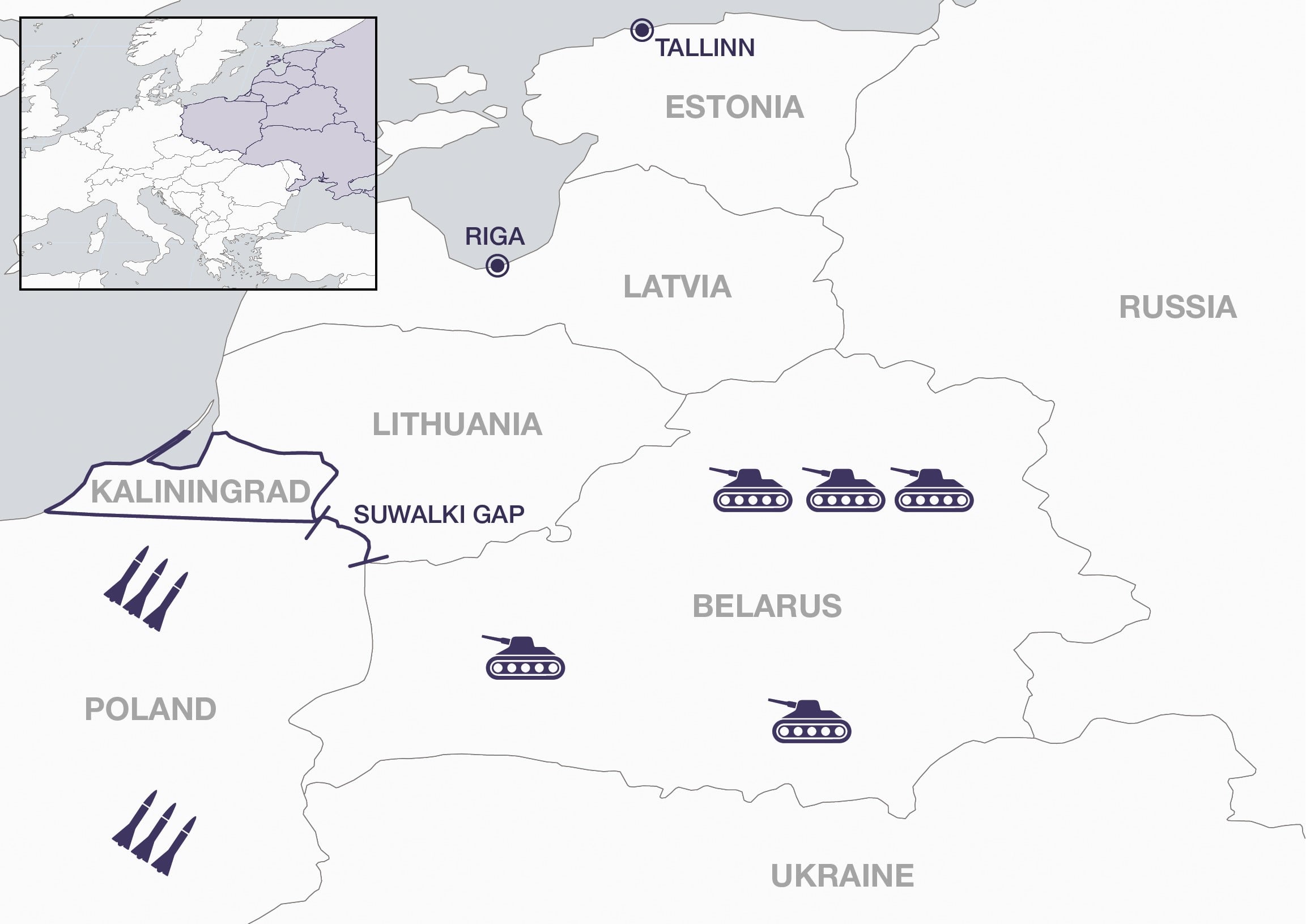
Army Lt. Gen. Ben Hodges, commanding general of U.S. Army Europe, said earlier this year he will be closely watching what equipment enters Belarus, and, more importantly, what remains there afterward.
Though North Korean nuclear threats have dominated the news for months, the slow burn of Russian territory grabs in eastern Europe, coupled with NATO criticism from President Donald Trump, create a scenario that could erupt at exactly the wrong time — when the United States is distracted and unprepared.
European allies near the Russian border have ramped up military spending and re-instituted conscription as Russia rises. These exercises cast “the shadow of the Russian Bear” over a region that has memories of Russian domination, Hodges said.
Nearly every recent paper, report and think-tank analysis has focused likely future Russian aggression in the Baltics as the next logical step in an effort to recapture lost Soviet territories and antagonize NATO states.
Retired U.S. Army Gen. Jack Keane, former vice chief of staff of the Army, said nearly every recent Russian military exercise has focused on the Baltics.
“They’re practicing a war against the U.S. and NATO — that’s what they’re doing,” Keane said.
RELATED
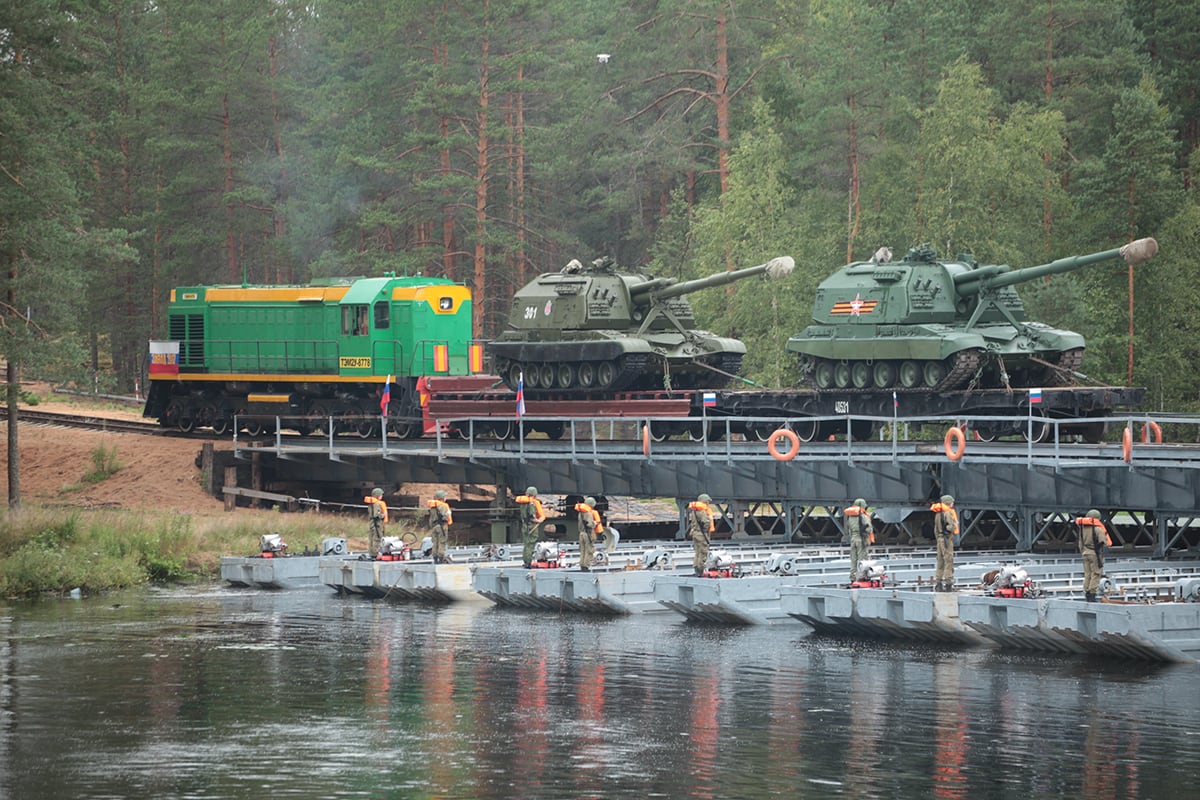
Russians moved an estimated 150,000 troops along Ukraine’s eastern border within days of the end of the 2014 Sochi Olympics as a cover to position forces in Crimea, which they seized despite international condemnation.
Should they move on the Baltics, a buffer between Europe and Russia, they would face nearly the smallest NATO force in the organization’s history and nearly the fewest U.S. troops in modern times.
There are fewer than 65,000 soldiers stationed or forward-deployed in Europe, as compared to more than 270,000 at the height of the Cold War.
Top leaders do not mince words when speaking of Russia.
“Russia presents the greatest threat to our national security,” Chairman of the Joint Chiefs of Staff Marine Corps Gen. Joseph Dunford said during recent congressional testimony.
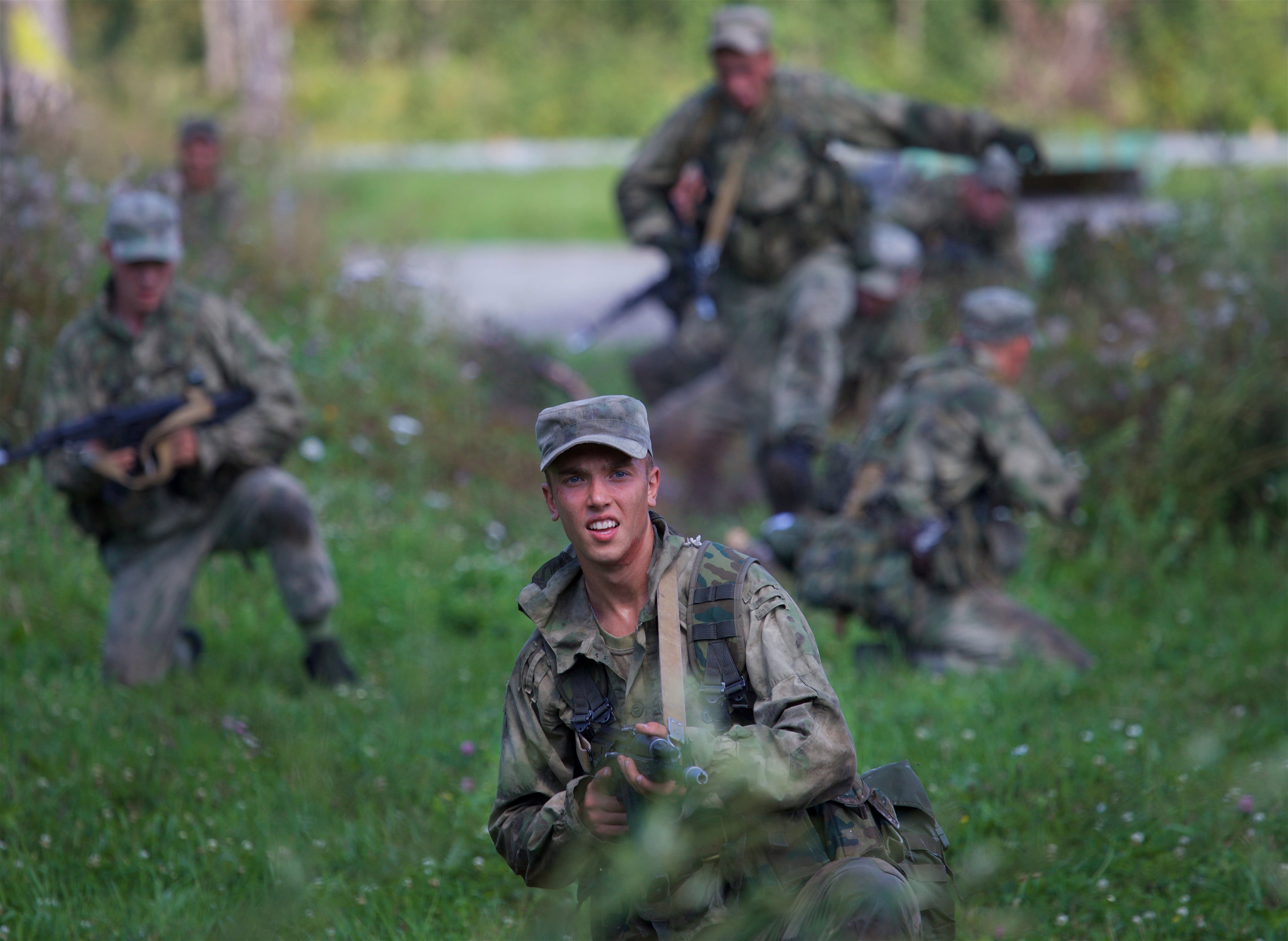
RUSSIA’S HYBRID WARFARE
While the United States has spent the past 16 years fighting terrorists and waging counterinsurgency campaigns across the world, Russia has been watching and rebuilding its military.
We have returned to the “great power competition,” Keane said.
Putin knows that Russia can’t fight a conventional war or extend far from its border. But it can push incrementally to reclaim historical Russian territory and destabilize NATO.
The United States’ current stance toward Moscow is unclear. Trump has repeatedly made comments supporting Putin and questioning the U.S. commitment to its European allies.
But many of Trump’s top advisers — his secretaries of state and defense, chairman of the joint chiefs of staff and the vice president — have all identified Russia as a threat and committed the United States to defending NATO.
For the past several years, the Russians have been refining a new form of aggression and “hybrid” warfare. It combines elements of conventional military power with subversion in the form of cyber-attacks, disinformation and electronic warfare.
Invasions and hybrid warfare fighting in the Republic of Georgia in 2008, the annexation of Crimea in 2014, and ongoing fighting in eastern Ukraine have been test beds for a new Russian military, Keane said.
“They’re intimidating our NATO allies,” Keane said. “They want them to see the United States isn’t who you think it is. That they can push us around.”
Retired Navy Adm. James Stavridis, former Supreme Allied Commander in Europe and current Fletcher School dean at Tufts University, said he saw a Europe on edge when he took command in 2009.
Russia intended to increase its military capability, reorganize and modernize its land forces, rebuild its navy, and use “this newer, stronger military to push on the non-NATO states around Russia, the so-called ‘near abroad,’ ” Stavridis said.
The Belarus Digest has reported that Russia has been “grooming coalitions and unions” in Belarus, and Russia exerts political, diplomatic and economic pressure on the tiny nation of less than 10 million people.
Belarus borders Poland, Latvia and Lithuania, near the Baltic Sea and between Russia and its satellite territory Kaliningrad.
The Baltics fit the criteria for past Russian intervention — near the Russian border, contain Russian-speaking people, formerly part of the Russian empire. About a quarter of Estonia and Latvia consider themselves ethnic Russians.
Some experts see recent fighting as successes for Putin, if for no other reason than they have boosted his popularity with the Russian people in the face of a weak economy.
“Many in Russia might think that this is the way to get low-hanging fruit to restore the Russian empire,” retired Army Maj. Gen. Robert Scales said.
Throughout the Cold War the fear was that the world’s two nuclear superpowers would collide and begin launching waves of nuclear missiles.
But today, a resurgent Russia is focused instead on regional power.
Nuclear strikes are not an option experts say Russia is likely to initiate.
Nevertheless, authors of a 2016 RAND study on deterring Russia say multiple scenarios could result in NATO counterattacks and strikes into Russia. And Russia has said it will use nuclear weapons in defense of any existential threat, including attacks within its borders.
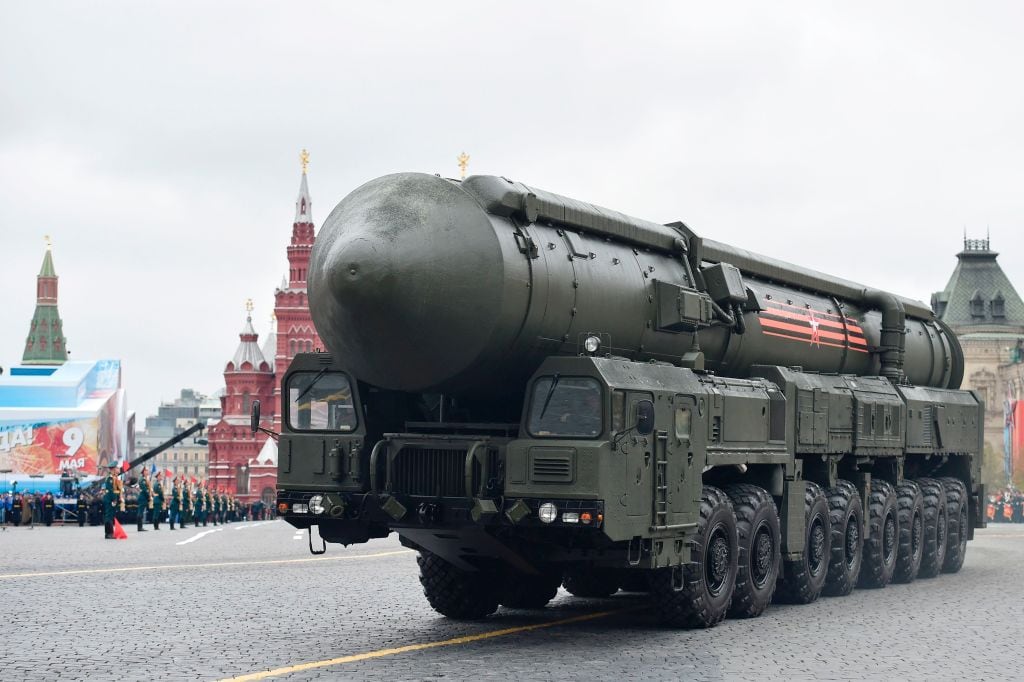
MOSCOW’S MILITARY BUILDUP
Between 2007 and 2016, Russia increased military spending by 87 percent, according to a June policy brief by the European Leadership Network.
Russia’s military has rebuilt to counter U.S. strengths, restocking its ground forces, updating its air and missile defenses, improving its special operations units’ equipment, and building drone and cyber capabilities into the lowest levels of combat units.
Russia reformed its 1st Guards Tank Army, according to the Belarus Digest. This offensive strike force has 700 tanks, 1,300 other armored vehicles and 500 artillery tubes and rocket launchers firing from the cover of advanced mobile-radar air defense.
The unit is slated to participate in the September exercise in Belarus.
The Russians have also restructured their ground units, creating the Battalion Tactical Group, which includes one tank company, three mechanized infantry companies, one anti-armor company, two to three self-propelled artillery batteries, a multiple-launch rocket battery, and two air defense batteries, according to a paper titled “Making Sense of Russian Hybrid Warfare,” published by the Institute of Land Warfare.
Some of its weapons outrange U.S. land forces by 2,500 meters, according to the paper.
Russian ground troops number at about 350,000. They use massed volumes of artillery fire as part of their attack doctrine, according to a Center for Strategic and International Studies report published in March.
These developments show that Russia is “an incredibly weak country playing a very, very good hand,” said Scales, author of “Scales on War: The Future of America’s Military at Risk.”
The Russians could jam radars and signals intelligence. Both are the backbone to U.S. air dominance. These capabilities give Russians something the U.S. and NATO have not faced in a generation — widespread anti-access and area denial.
They also can use electronic warfare to disable types of artillery. They’ve used social media to craft personalized cyber messages to Ukrainian troops’ cell phones, which included references to the soldiers’ families.
Their air defense can hold NATO airpower at bay while rockets and artillery, alongside drone-focused ISR, can target U.S. and NATO forces.
Ukrainian border fighting during the past two years has “demonstrated substantial logistical achievements,” showing Russian ability to conduct large-scale, long-distance deployments, according to a recent Carnegie Endowment for International Peace report.
While Russia is far from regaining military superpower status, it has re-emerged as a formidable threat.
“The increase in fighting power leads to a second main conclusion: Russia is able to and may launch two simultaneous large operations,” according to the Carnegie report.
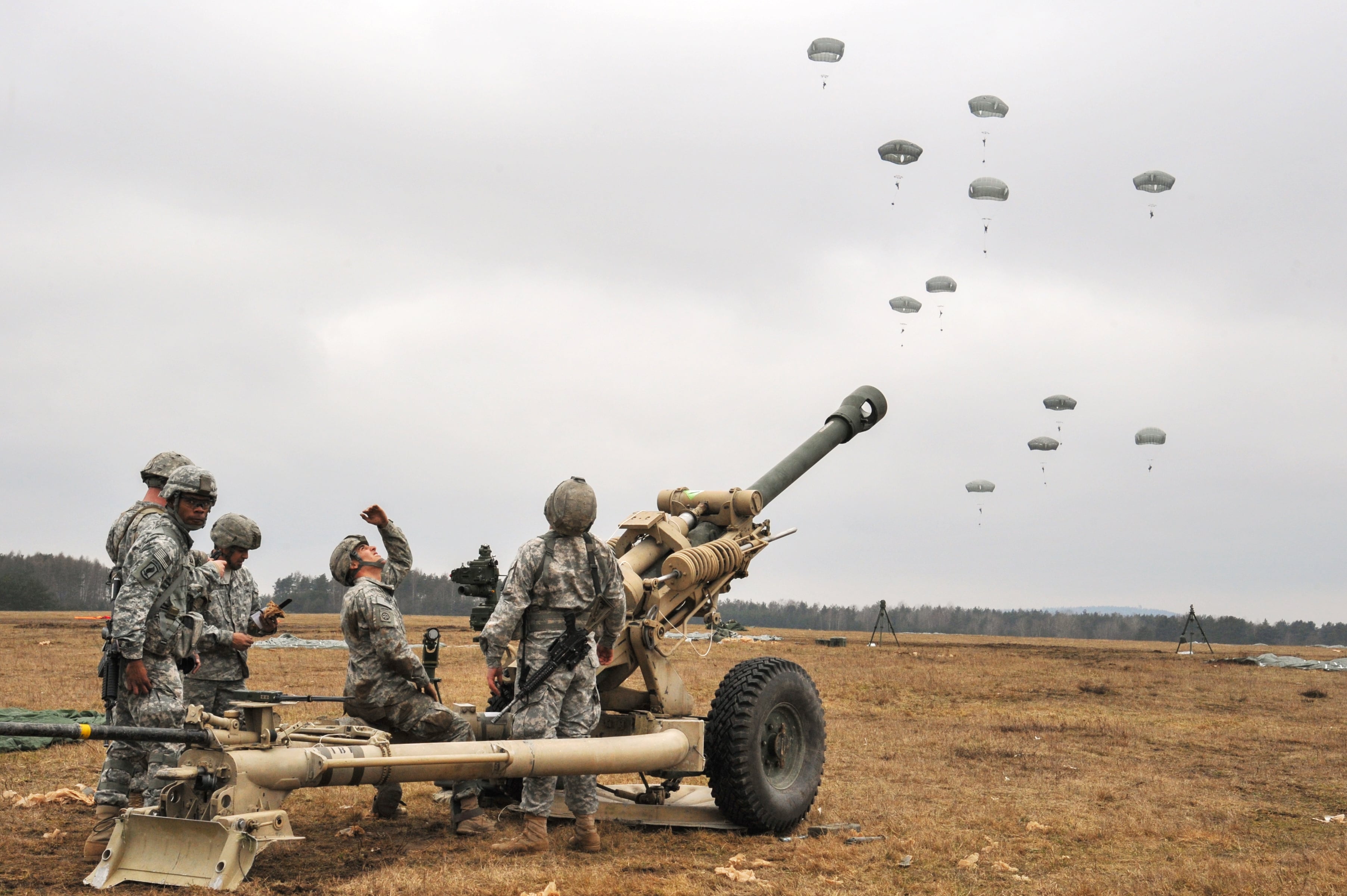
THE U.S. RESPONSE
Experts agree U.S. military leaders have gained experience fighting terrorist organizations in recent wars. They also agree that type of fighting is vastly different from facing a near-peer adversary.
As Russia increased its aggression in the region, military leaders have taken steps toward regaining ground, reassuring NATO allies and returning some U.S. combat power to Europe after decades of post-Cold War drawdown.
In 1987, the Army had 17 brigades and 666 combat aircraft in Europe. That fell to two brigades and 121 combat aircraft earlier this year, according to the Carnegie Foundation for International Peace.
In January, the 3rd Armored Brigade Combat Team, 4th Infantry Division, along with a combat aviation brigade and combat sustainment brigade, deployed to Europe for a nine-month “heel-to-toe” rotational deployment.
Throughout the summer, U.S. forces worked alongside both NATO and non-NATO partners in dozens of exercises across Europe.
“The new BCT rotations, they’re not fooling anyone on the Russian side,” said retired Army Col. Douglas Macgregor, author of “Margin of Victory: Five Battles that Changed the Face of Modern War.” “They see the same old equipment, old formations and they know the limitations of those.”
Others agree.
“I wish to be as clear and direct as our findings allow me to be: NATO is not postured or prepared to defend its most exposed and vulnerable member states — the Baltic republics of Estonia, Latvia and Lithuania — against a Russian attack,” said David Shlapak, co-author of a 2016 RAND study on deterring Russia in eastern Europe, in a recent Army Times article.
One of the questions that lingers is: Will NATO, in fact, mount a collective defense and all come to the aid of the Baltic nations?
Some believe a conventional push into a NATO ally such as Latvia, Lithuania or Estonia would provoke a resurgent NATO and could lead to a larger continental war.
Others question the resolve of some allies, including a crucial one in Germany.
Retired Army Gen. Barry McCaffrey said that Putin has figured out that he can test U.S. and NATO resolve.
“The Russians are smart, we’re too far from our power base, there’s no [U.S.] national interest at stake,” the former division commander in Europe said.
DETERRING RUSSIA
Experts agree that first the U.S. must commit to NATO — the current posture is “potentially inviting a devastating war, rather than deterring it,” according to the RAND study.
In August, Army Gen. Curtis Scaparrotti, commander of U.S. European Command and Supreme Allied Commander-Europe, spoke in Finland, reassuring NATO allies that the focus is on deterrence.
But beyond speeches, experts say, the United States needs manpower and equipment in Europe, and not in the Cold War way.
An American presence in Europe will not mean large bases in Germany, said Jakub Grygiel, an international relations professor at Johns Hopkins University.
It will mean many soldiers scattered across Eastern Europe. Those forces must work jointly, not just with host nation militaries but with local police, border guards and even armed civilians, Grygiel said.
Several experts agree that it would take at least seven brigades — four from NATO and three from the United States — stationed at or near NATO’s eastern border to provide sufficient deterrence in Europe.
Those brigades should include three heavy armored brigades with land-based fire support and airpower.
This posture would “fundamentally change the strategic picture from Moscow,” RAND authors noted.
Speed, maneuverability and increased lethality are all necessary, Macgregor said, adding that leaders have given those notions lip service, but he’s seen little real action.
“I’m sure if the war were a Power Point contest, we’d win it,” Macgregor said. “It demands a different Army from the one you’ve got.”
But the United States has neither the manpower or resources to fully monitor all aspects of global security. Political and military leaders must make choices and commit to priorities, experts said.
“No force can be strong at all places and times,” said James Holmes, a professor at the U.S. Naval War College. “That’s the challenge for strategists: setting and enforcing priorities for using finite resources. We can only do so much.”
Reporters Stephen Losey, Jeff Schogol and Geoff Ziezulewicz contributed to these reports.
Todd South has written about crime, courts, government and the military for multiple publications since 2004 and was named a 2014 Pulitzer finalist for a co-written project on witness intimidation. Todd is a Marine veteran of the Iraq War.





